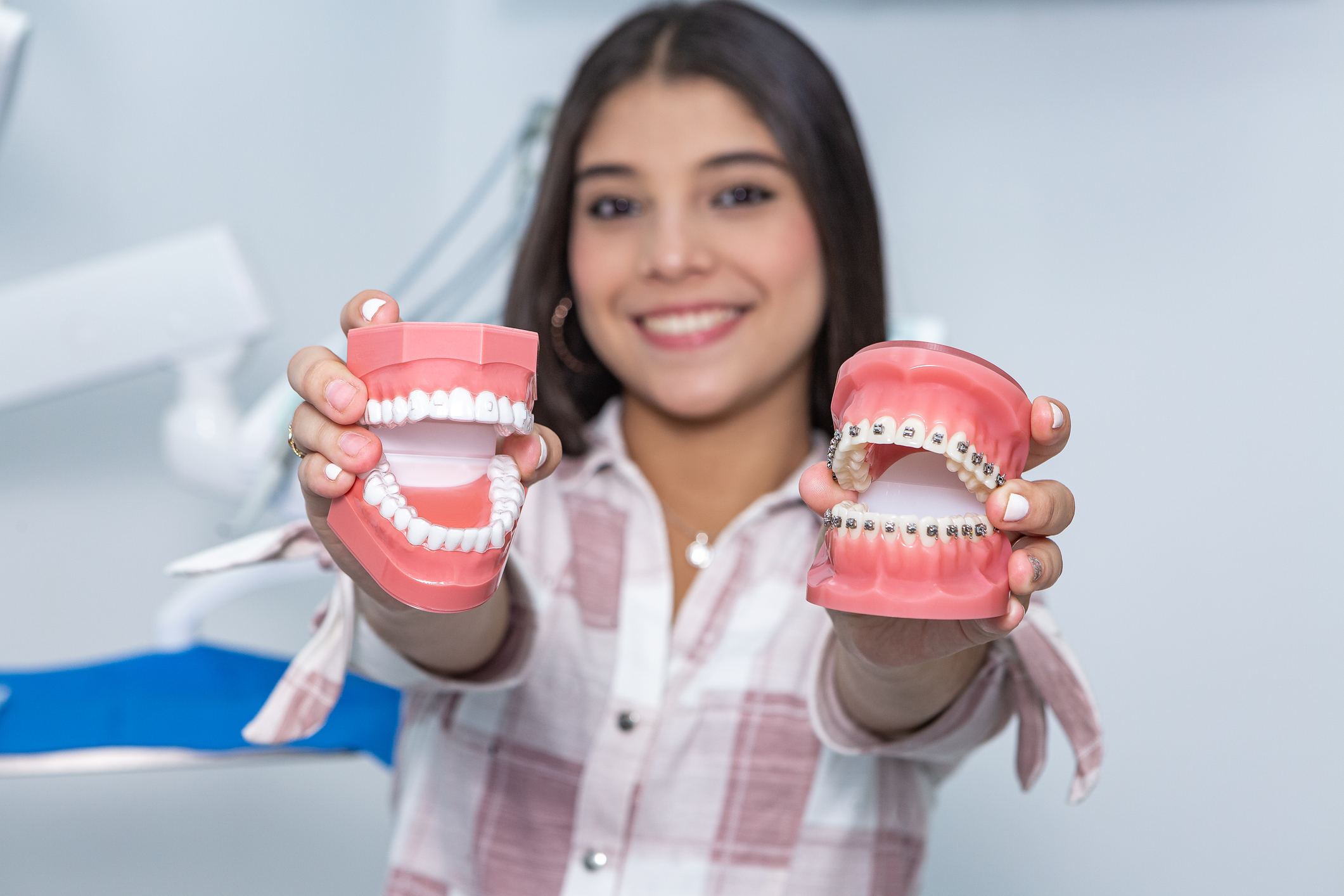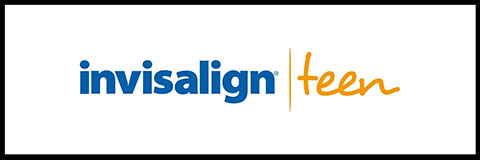Orthodontic treatment is a significant milestone in many teenagers’ lives. With advancements in dental technology, parents and teens now have more options than ever before. Two of the most popular choices are traditional braces and Invisalign. Deciding which is best for your teen involves considering various factors. These include effectiveness, aesthetics, comfort, maintenance, and cost. Additionally, the unique aspects of Singapore, such as the fast-paced lifestyle, food-centric culture, school environment, and local healthcare options, play a crucial role in this decision. In this blog post, we’ll explore the differences between clear aligners (Invisalign) and traditional braces to help you make an informed decision.
The Basics: What Are Traditional Braces and Invisalign?
Traditional braces are metal brackets glued to the teeth, connected by wires and elastic bands. These components work together to apply pressure on the teeth, gradually shifting them into the desired position. Braces are a well-established method used for decades to treat a wide range of orthodontic issues, from simple alignment problems to more complex cases.
Invisalign is a modern alternative that uses a series of clear, custom-made aligners to move teeth. These aligners are made of smooth, BPA-free plastic, fit snugly over the teeth, and are virtually invisible when worn. Unlike traditional braces, Invisalign aligners are removable, allowing greater flexibility and ease of use.
Effectiveness: Which One Works Better?
Effectiveness is a critical consideration when choosing between Invisalign and traditional braces.
Traditional Braces are known for their unwavering effectiveness in treating various orthodontic issues. These include complex cases such as severe misalignment, overbites, underbites, and crossbites. Since braces are fixed to the teeth, they provide continuous, consistent pressure, which is beneficial for achieving optimal results. Orthodontists in Singapore have extensive experience with traditional braces, making them a reliable choice for teens with significant orthodontic needs.
Invisalign is highly effective for mild to moderate orthodontic issues. It excels at treating minor crowding, gaps between teeth, and slight alignment corrections. However, traditional braces may be more suitable for teens with more severe or complex orthodontic conditions. That said, advancements in Invisalign technology have expanded its ability to treat more complex cases. Singaporean orthodontists often recommend a consultation to determine if Invisalign could work for your teen’s specific needs.
Aesthetics: The Look and Feel
For many teens, where appearance and self-image are important, the aesthetic impact of orthodontic treatment is a significant factor.
 Traditional Braces can be quite noticeable, which might be a concern for image-conscious teens. While modern braces are smaller and less conspicuous than they used to be, they are still visible and can affect a teen’s confidence, especially in a school environment. Ceramic braces, which are less noticeable because they are made from tooth-coloured materials, are an option but are generally more expensive than metal braces.
Traditional Braces can be quite noticeable, which might be a concern for image-conscious teens. While modern braces are smaller and less conspicuous than they used to be, they are still visible and can affect a teen’s confidence, especially in a school environment. Ceramic braces, which are less noticeable because they are made from tooth-coloured materials, are an option but are generally more expensive than metal braces.
Invisalign is the preferred choice for those who prioritise aesthetics. The clear aligners are nearly invisible, allowing teens to undergo orthodontic treatment without drawing attention to their teeth. This discretion is especially valued, as teens are often concerned about maintaining a polished appearance in school and social settings. By being virtually undetectable, Invisalign offers a significant confidence boost.
Comfort: Does Invisalign Or Traditional Braces Feel Better?
Comfort is another important consideration when choosing between traditional braces and Invisalign.
Traditional Braces can cause discomfort due to the metal brackets and wires, which may irritate the inside of the mouth, leading to sores and discomfort. The process of tightening the wires during orthodontic appointments can also cause soreness for a few days afterwards. However, many teens get used to the sensation of braces over time, and the discomfort becomes more manageable.
Invisalign aligners are generally more comfortable because they are made from smooth plastic, eliminating the risk of sharp edges or wires poking the inside of the mouth. The ability to remove the aligners when eating or brushing teeth also adds to the comfort level, reducing the likelihood of irritation. However, there can still be some discomfort as the teeth shift, particularly when starting a new set of aligners, but this is usually less intense than with traditional braces.
Maintenance: Daily Care and Responsibilities
Maintenance is a key factor to consider, especially in Singapore’s fast-paced environment, where teens juggle school, extracurricular activities, and social commitments.
Traditional Braces require diligent care to prevent food particles from getting trapped in the brackets and wires, which can lead to plaque buildup, cavities, and staining. Teens with braces need to be particularly careful about brushing after every meal. They are also encouraged to use special tools like interdental brushes to clean around the braces. Regular orthodontic appointments are also necessary for adjustments, which means taking time out from school or activities.
Invisalign offers easier maintenance because the aligners are removable. Teens can take them out to brush and floss their teeth as usual, making it easier to maintain good oral hygiene. However, the aligners themselves need regular cleaning to prevent bacteria buildup. Invisalign requires high responsibility, as teens must wear aligners for 20-22 hours a day to be effective. Forgetting to wear the aligners or losing them can delay treatment progress, which can be a concern.
Lifestyle Impact: Eating, Playing, and Social Life
Orthodontic treatment can significantly impact various aspects of the daily routines of teens, including eating habits, sports participation, and social interactions.
 Traditional Braces come with dietary restrictions. Teens must avoid hard, sticky, or chewy foods that can damage the braces, such as popcorn, nuts, and certain candies. These restrictions can be frustrating, especially in a food-centric culture like Singapore, where hawker centres and food courts offer various tempting options. Additionally, teens participating in contact sports may need to wear a mouthguard to protect their braces and mouth from injury.
Traditional Braces come with dietary restrictions. Teens must avoid hard, sticky, or chewy foods that can damage the braces, such as popcorn, nuts, and certain candies. These restrictions can be frustrating, especially in a food-centric culture like Singapore, where hawker centres and food courts offer various tempting options. Additionally, teens participating in contact sports may need to wear a mouthguard to protect their braces and mouth from injury.
Invisalign offers a liberating experience when it comes to eating and participating in activities. Since the aligners are removable, there are no dietary restrictions. Teens can enjoy all their favourite foods as long as they remove the aligners first. They also have to rinse before putting the aligners back in. For active teens involved in sports or other extracurricular activities, the ability to remove the aligners as needed is a significant advantage.
Compliance and Commitment: Will Your Teen Stick with It?
The success of orthodontic treatment depends heavily on the teen’s commitment to following the treatment plan.
Traditional Braces do not require much from the patient beyond regular cleaning and avoiding certain foods. They are fixed to the teeth and work continuously without needing the patient to remove or replace them. This can be an advantage for teens who may need to be more diligent about following treatment instructions.
Invisalign requires a higher level of commitment from the teen, as they must wear the aligners for the recommended 20-22 hours daily. Teens must remember to switch to the next set of aligners on schedule and avoid misplacing them. Invisalign can be an excellent option for teens who are responsible and committed to the process. However, traditional braces might be a better choice if your teen is likely to forget to wear the aligners or frequently lose them.
Availability and Access to Orthodontic Care
Access to quality orthodontic care is widely available in Singapore, with many experienced orthodontists offering both traditional braces and Invisalign. Whether you choose a public healthcare facility, such as the National Dental Centre Singapore (NDCS), or a private orthodontic clinic, you can expect high standards of care.
It’s important to consult with a qualified orthodontist who can assess your teen’s specific needs and recommend the most suitable treatment based on their bite, alignment, and lifestyle considerations.
Cost: What’s the Financial Impact in Singapore?
Cost is always a great consideration, and orthodontic treatment can be a significant investment. The cost of both traditional braces and Invisalign can vary depending on the complexity of the case, the orthodontist’s fees, and the duration of treatment.
Traditional Braces are generally more affordable than Invisalign, with costs ranging from SGD 3,000 to SGD 6,000. This price range can vary depending on whether metal or ceramic braces are used, with ceramic braces being more expensive.
Invisalign tends to be more expensive, with costs ranging from SGD 4,000 to SGD 8,000 or more. It depends on the severity of the orthodontic issues and the duration of treatment. The higher cost is due to the advanced technology and materials used in creating the custom aligners.
While some dental insurance plans in Singapore may cover part of the cost of orthodontic treatment, it is essential to check with your insurance provider for specific details. Additionally, many orthodontic clinics in Singapore offer flexible payment plans to make treatment more accessible to families.
Final Thoughts: Invisalign or Traditional Braces for Your Teen
Deciding between Invisalign and traditional braces for your teen involves considering various factors. These include the severity of the orthodontic issues, your teen’s lifestyle and preferences, and your family’s budget. Both options have pros and cons, and what works best for one teen may not be the right choice for another.
Traditional Braces are a reliable, time-tested method for treating many orthodontic problems. They are highly effective, especially for more complex cases, and require less responsibility from the teen. However, they are more visible, have dietary restrictions, and may cause more discomfort. Invisalign offers a more discreet and comfortable alternative, ideal for teens concerned about braces’ appearance and wanting more freedom in their daily lives. However, it requires a high level of responsibility and may not be suitable for severe orthodontic issues.
Ultimately, the best way to determine the best option for your teen is to consult an experienced orthodontist. They can assess your teen’s specific needs, discuss the pros and cons of each treatment, and help you make a decision that will lead to a beautiful, healthy smile. Making an informed decision will ensure your teen receives the best possible care and achieves the smile they’ve always wanted.





Join the discussion One Comment